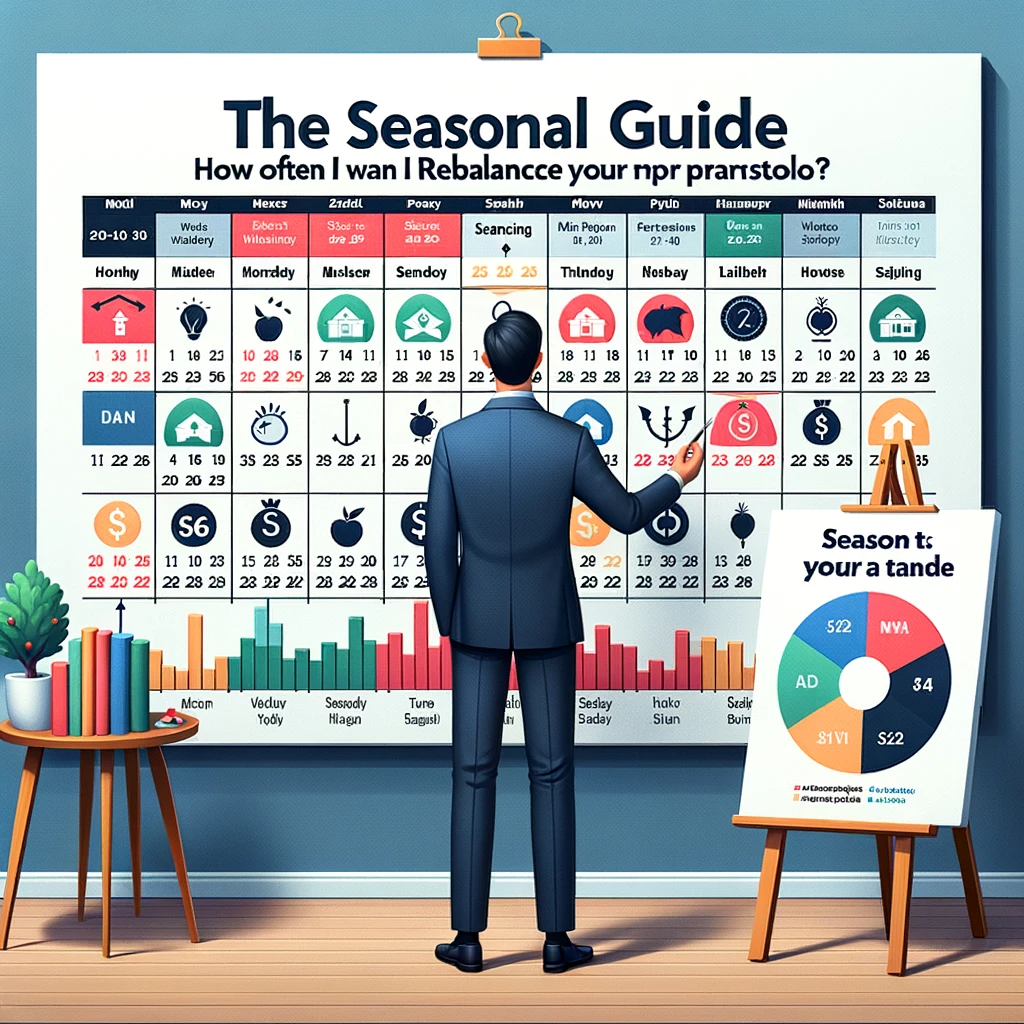The Seasonal Guide: How Often Should I Rebalance My Portfolio?
As the seasons change, so do market trends and opportunities. Many investors ask, ‘how often should I rebalance my portfolio?’ and wonder if there’s an optimal time of year. This seasonal guide will walk you through the nuances of timely portfolio rebalancing and its impact on your financial journey.

Understanding Seasonal Market Trends
Before strategizing rebalancing based on seasons, it’s crucial to recognize that financial markets often exhibit seasonal patterns. Historically, factors like corporate earnings reports, fiscal policies, and consumer behavior align with certain times of the year, influencing market dynamics.
Winter: The Reflective Rebalance
- Year-end Tax Implications: December often sees investors selling off underperforming assets to claim capital losses, a strategy known as tax-loss harvesting. It might be an opportune time to rebalance, considering the tax implications of your investment moves.
- Holiday Shopping Impact: The success or failure of the holiday shopping season can significantly impact retail and e-commerce sectors. Rebalancing in winter can capitalize on these trends.
Spring: The Growth-Oriented Rebalance
- Earnings Season: Spring is a season for many companies to release their Q1 earnings. Positive earnings can boost sectors unexpectedly, necessitating a portfolio adjustment.
- Tax Returns and Consumer Spending: With many individuals receiving tax returns, consumer spending can increase. Consider rebalancing towards sectors that benefit from this influx, like consumer discretionary.
Summer: The Cautious Rebalance
- Historical Trends: Historically, summer months, especially August, have shown weaker stock market performances. Known as the “sell in May and go away” strategy, some investors reduce stock holdings in summer. Rebalancing during this period might involve diversifying or leaning towards more stable assets.
- Vacation Impact: As the travel industry sees a boost, it might be worth considering its impact on your portfolio.
Autumn: The Anticipatory Rebalance
- Economic Forecasts: With many financial institutions releasing economic forecasts for the upcoming year, autumn is an excellent time to re-evaluate and anticipate market trends.
- Pre-Holiday Period: As businesses ramp up for the holiday season, sectors like logistics, e-commerce, and retail might see changes. Rebalancing in autumn can position your portfolio to capitalize on these shifts.
Benefits of Seasonal Rebalancing
- Informed Decision Making: Aligning rebalancing with seasonal trends allows investors to make more informed decisions based on historical data and anticipated market movements.
- Optimized Returns: By rebalancing in sync with the market’s natural ebb and flow, investors can potentially optimize returns and reduce risks.
- Proactive Portfolio Management: Instead of waiting for asset allocations to drift significantly, seasonal rebalancing offers a more proactive approach.
Conclusion
While it’s essential to recognize that past performance doesn’t guarantee future results, seasonal trends provide valuable insights. By understanding and anticipating these patterns, investors can make more informed decisions about when and how often to rebalance their portfolios. However, always consult with a financial advisor and ensure rebalancing aligns with your individual financial goals and risk tolerance.